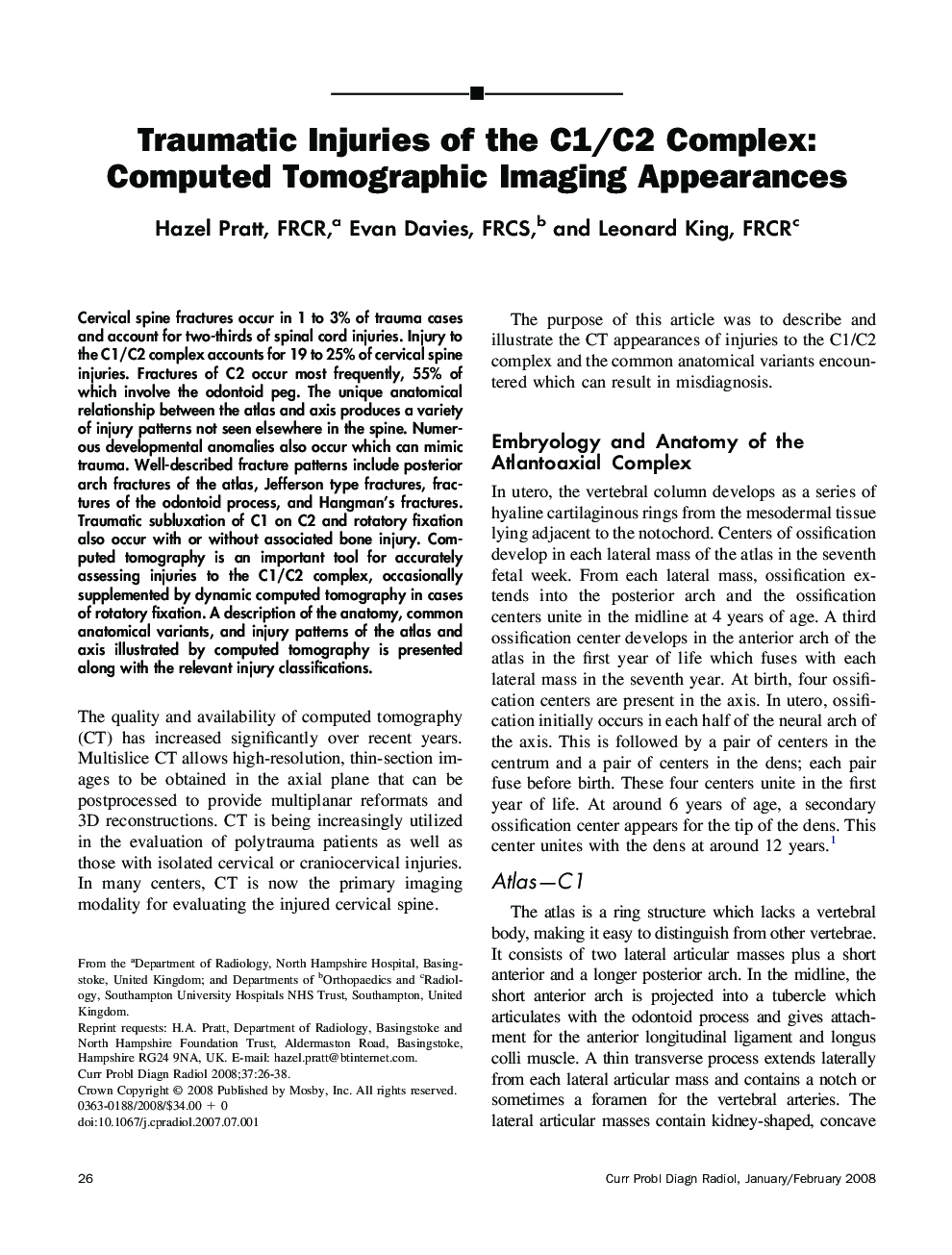| Article ID | Journal | Published Year | Pages | File Type |
|---|---|---|---|---|
| 4223825 | Current Problems in Diagnostic Radiology | 2008 | 13 Pages |
Cervical spine fractures occur in 1 to 3% of trauma cases and account for two-thirds of spinal cord injuries. Injury to the C1/C2 complex accounts for 19 to 25% of cervical spine injuries. Fractures of C2 occur most frequently, 55% of which involve the odontoid peg. The unique anatomical relationship between the atlas and axis produces a variety of injury patterns not seen elsewhere in the spine. Numerous developmental anomalies also occur which can mimic trauma. Well-described fracture patterns include posterior arch fractures of the atlas, Jefferson type fractures, fractures of the odontoid process, and Hangman’s fractures. Traumatic subluxation of C1 on C2 and rotatory fixation also occur with or without associated bone injury. Computed tomography is an important tool for accurately assessing injuries to the C1/C2 complex, occasionally supplemented by dynamic computed tomography in cases of rotatory fixation. A description of the anatomy, common anatomical variants, and injury patterns of the atlas and axis illustrated by computed tomography is presented along with the relevant injury classifications.
